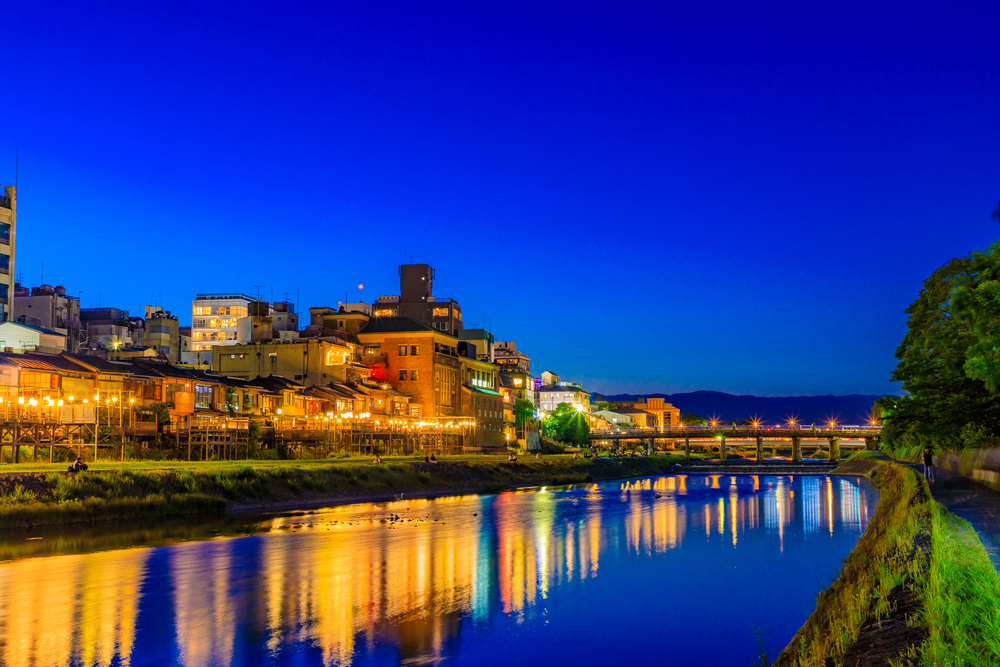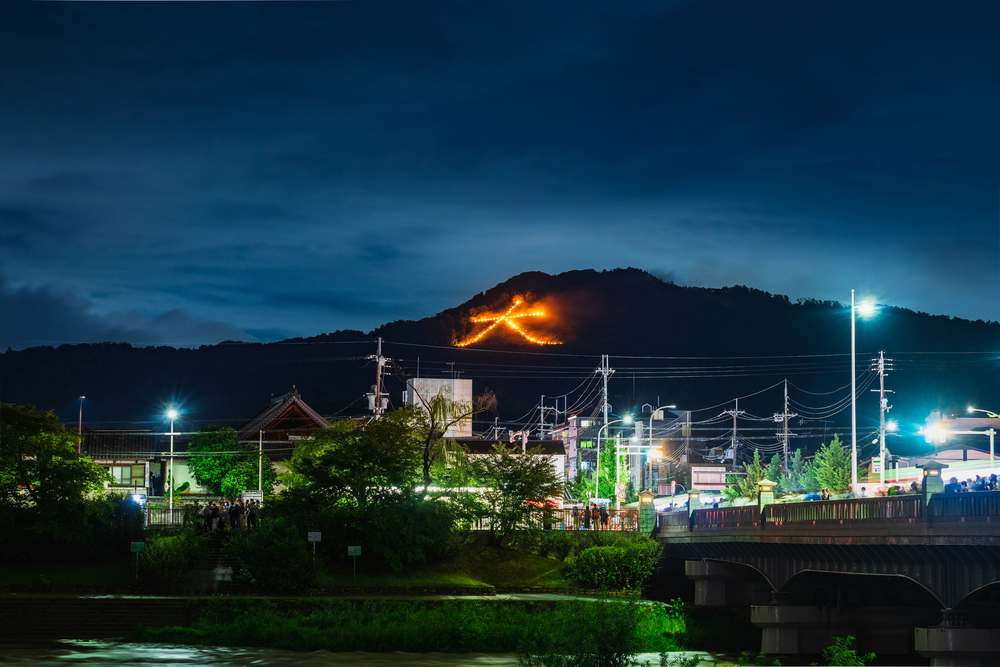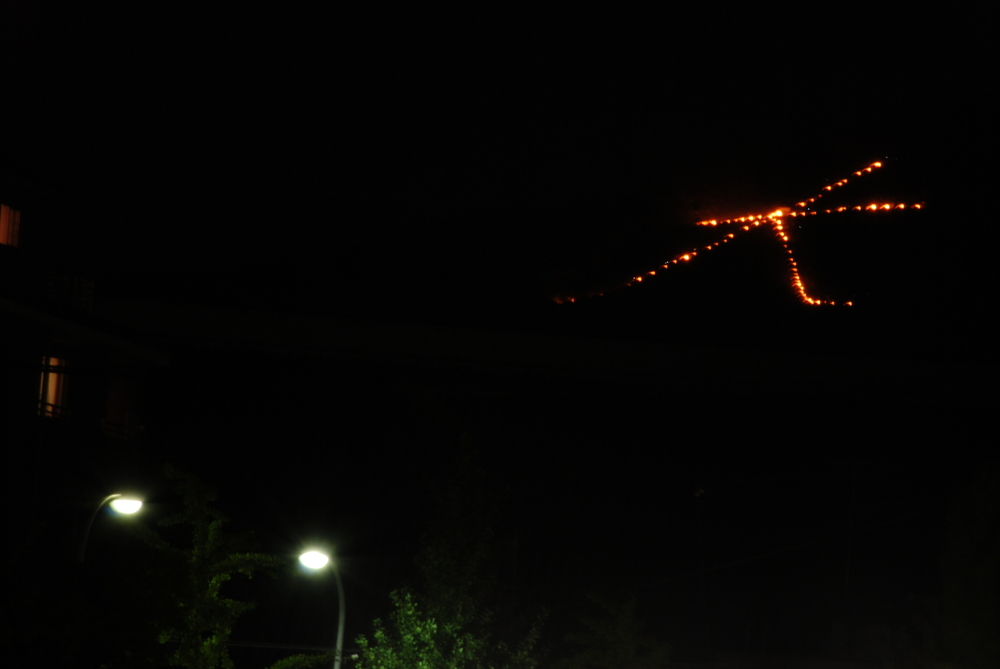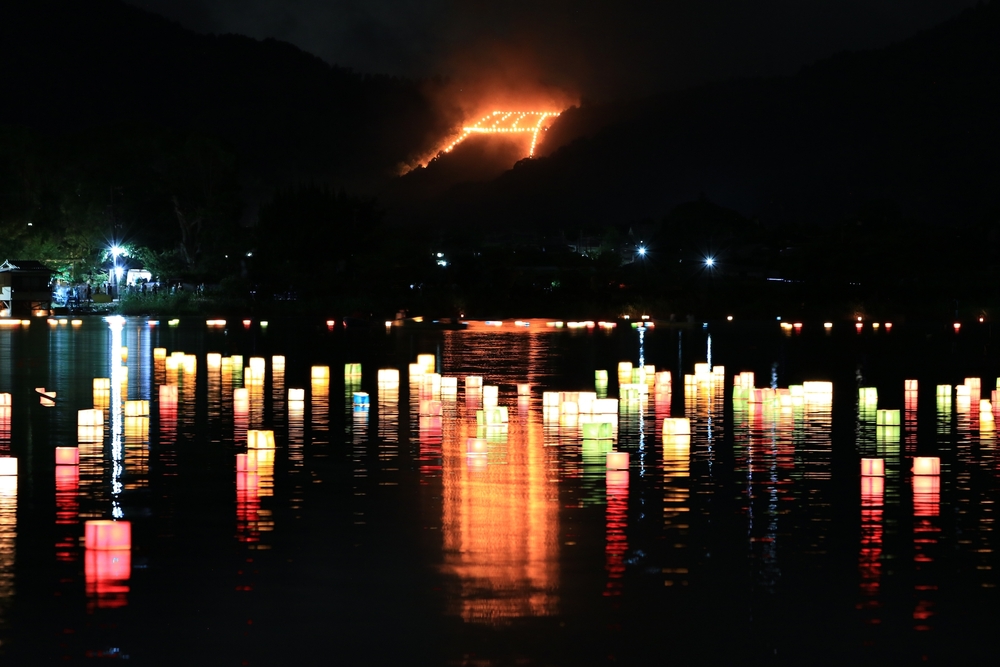If you are going to go sightseeing, you want to incorporate into your itinerary things that you can only see and experience during that time of the year. In this issue, we will introduce the conditions, events, and recommended spots in August in Kyoto for those who are interested in such things.
About Kyoto in August

Kyoto in August, a hot and humid month. It coincides with the summer vacation of Japanese schools and is a time of year when many tourists visit the city. In Kyoto, visitors can enjoy experiences unique to the hot season, such as Noryo-yuka, cold sweets, and stores offering shaved ice. You can also experience Japanese cultural events that are unique to this time of year. Sightseeing in the heat and crowds may be difficult, but Kyoto in August still has its own charm that is hard to change.
Weather
August in Kyoto is one of the hottest months of the year and is characterized by high temperatures and humidity. Average daytime temperatures often exceed 35°C (81°F), and nighttime temperatures rarely drop below 25°C (77°F). As a result, it often feels very hot and humid. Caution against heat stroke is necessary, and it is important to hydrate frequently, especially during outdoor activities.
Events
Various summer festivals and events are held in Kyoto in August, the most famous of which is the “Gozan Okuribi (bonfire),” a traditional event held on August 16 in which large fire shapes are lit on five mountains in Kyoto to send the spirits of ancestors back to the afterlife. Summer festivals are also held at shrines throughout the region, and many of these festivals are closely connected to the local community, with Bon Odori and food stalls.
Travel
August is during the summer vacation of Japanese schools, and many tourists from home and abroad visit Kyoto. Major tourist attractions in Kyoto are especially crowded, especially Kiyomizu-dera Temple, Kinkaku-ji Temple, and Arashiyama. If you plan to visit Kyoto during this period, we recommend that you visit the sightseeing spots in the early morning or evening, when it is cooler. Many indoor activities are also offered, such as traditional cultural experiences and crafts.
August Fashion
Clothing in Kyoto in August should be appropriate for the hot and humid climate. Clothing made of breathable and water-absorbent materials, such as lightweight cotton or linen shirts, T-shirts, and dresses are recommended. It is also advisable to use hats, sunglasses, clothing with UV protection, and parasols to avoid direct sunlight. For outdoor events and walks, sandals or sneakers that are easy to walk in are appropriate.
Participate in Obon-related events
One of the Japanese customs is called “Obon”. Obon is an event to welcome, honor, and send off the spirits of ancestors. It is usually held over a four-day period from August 13 to 16, and various events are held in different regions.
In Kyoto, Gozan Okuribi (bonfire) and Toro Nagashi are held in conjunction with the Obon. Those interested in Japanese culture are encouraged to participate in these events and experience the culture firsthand.
Kyoto Gozan Okuribi (京都五山送り火)






The Gozan Okuribi (Bonfire) is a summer festival in Kyoto, along with the Gion Matsuri Festival, in which torches are lit in the mountains in the four directions of Kyoto, and the characters for “Daimonji,” “Daimonji,” “Myoho” and the shapes of “Torii” and “Ship” emerge one after the other. This event is one of the Obon events and is meant to send the spirits back to the underworld.
Usually, six spots are lit in order from 8:00 p.m. on August 16, and can be viewed. Each of them is located far away from the other, so there are only a few spots where you can see all of them. Moreover, if you can see all of them, it means that the letters are small, or you have to make a reservation or pay a fee…
Basically, it is better to aim for 1 or 2 letters and go see them. If you move at the last minute, it is very crowded and you may not be able to see the mountain well, or you may not be able to find a spot. It is better to decide on a spot to see in advance and move while it is still light.
Arashiyama Toro Nagashi (嵐山灯籠流し)

Arashiyama Toro Nagashi is an event held in Arashiyama on the same day as the Gozan Okuribi mentioned above. Like the Gozan Okuribi, the Arashiyama Lantern Festival is a custom to send the spirits of the dead back to the underworld.
Paper or cloth is attached to a frame made of bamboo or wood, lit and floated down the river. Inside the toro (lantern), a piece of paper with a name or message written on it is placed along with a candle to mourn the individual.
The Toro Nagashi will be held at Arashiyama Nakanoshima Park from 7pm to around 9pm, one hour before the Gozan Okuribi is lit. At Arashiyama Nakanoshima Park, visitors can view the “toriigata” (shrine gate) bonfires of the Gozan Okuribi. This is a rare spot where you can see both the lanterns flowing down the river and the bonfires floating on the mountains.
Lantern festival (Mando-e) in Daigo-ji Temple (醍醐寺万灯会)
The “Lantern festival (Mando-e)” is held every year on August 5 at Daigo-ji Temple in Fushimi. At sunset, lanterns and paper lanterns placed along the approach to the temple are lit and the temple grounds are enveloped in a fantastic atmosphere. It is an event to offer prayers of gratitude to the ancestors and all other living creatures. It is a great opportunity to experience Japanese culture.
Check out our other events!
Kitano Tanabata Festival (北野七夕祭)

The Tanabata Festival is held in August at Kitano-tenmangu Shrine, which enshrines the god of learning. During this special period, visitors can worship on the grounds decorated with Tanabata bamboos, and various rituals and ceremonies are held, as well as lighting up the shrine at night.
The illuminated precincts decorated with Tanabata bamboos are breathtakingly beautiful. The “Mitarai River Ashitsuke Toumyo shinji,” in which visitors dip their ankles in the Mitarashi River that flows through the temple grounds to purge evil spirits with water, is also a rare experience.
Kodai-ji Temple, Summer Night Special Viewing (高台寺 夏の夜間特別拝観)

Kodai-ji Temple was built to mourn Toyotomi Hideyoshi (one of the three generals who unified Japan in the late 16th century). Every year from August 1 to August 18, the temple is illuminated at night. The entire temple grounds are enveloped in a fantastic atmosphere, with blue maples reflected on the surface of the pond and bamboo groves that float fantastically under the lights. Many temples and shrines in Kyoto are lit up in spring and fall, but summer light-ups are rare. If you are in Kyoto during this period, be sure to check it out.


